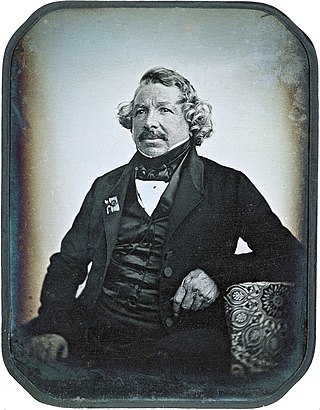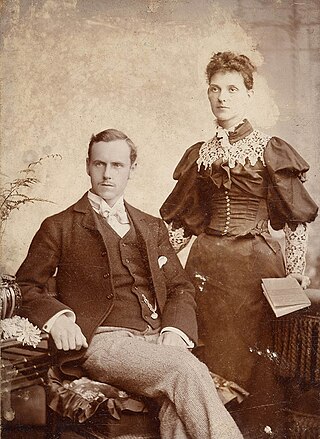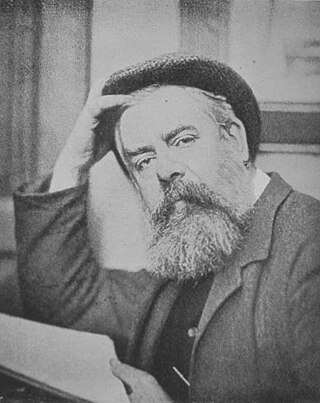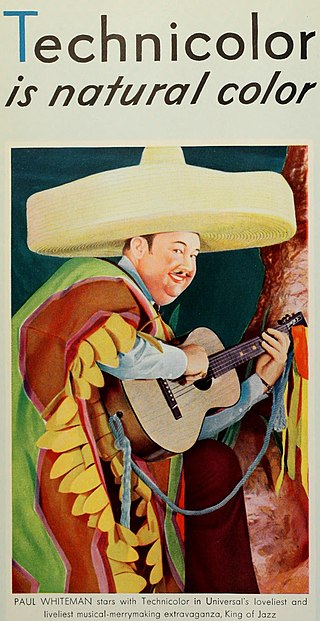Related Research Articles

Printmaking is the process of creating artworks by printing, normally on paper, but also on fabric, wood, metal, and other surfaces. "Traditional printmaking" normally covers only the process of creating prints using a hand processed technique, rather than a photographic reproduction of a visual artwork which would be printed using an electronic machine ; however, there is some cross-over between traditional and digital printmaking, including risograph.

CinemaScope is an anamorphic lens series used, from 1953 to 1967, and less often later, for shooting widescreen films that, crucially, could be screened in theatres using existing equipment, albeit with a lens adapter. Its creation in 1953 by Spyros P. Skouras, the president of 20th Century Fox, marked the beginning of the modern anamorphic format in both principal 2.55:1, almost twice as wide as the previously common Academy format's 1.37:1 ratio. Although the technology behind the CinemaScope lens system was made obsolete by later developments, primarily advanced by Panavision, CinemaScope's anamorphic format has continued to this day. In film-industry jargon, the shortened form, 'Scope, is still widely used by both filmmakers and projectionists, although today it generally refers to any 2.35:1, 2.39:1, 2.40:1, or 2.55:1 presentation or, sometimes, the use of anamorphic lensing or projection in general. Bausch & Lomb won a 1954 Oscar for its development of the CinemaScope lens.

Louis-Jacques-Mandé Daguerre was a French artist and photographer, recognized for his invention of the eponymous daguerreotype process of photography. He became known as one of the fathers of photography. Though he is most famous for his contributions to photography, he was also an accomplished painter, scenic designer, and a developer of the diorama theatre.

Platinum prints, also called platinotypes, are photographic prints made by a monochrome printing process involving platinum.
The science of photography is the use of chemistry and physics in all aspects of photography. This applies to the camera, its lenses, physical operation of the camera, electronic camera internals, and the process of developing film in order to take and develop pictures properly.

In photography, toning is a method of altering the color of black-and-white photographs. In analog photography, it is a chemical process carried out on metal salt-based prints, such as silver prints, iron-based prints, or platinum or palladium prints. This darkroom process cannot be performed with a color photograph. The effects of this process can be emulated with software in digital photography. Sepia is considered a form of black-and-white or monochrome photography.

Cross processing is the deliberate processing of photographic film in a chemical solution intended for a different type of film. The effect was discovered independently by many different photographers often by mistake in the days of C-22 and E-4. Color cross processed photographs are often characterized by unnatural colors and high contrast. The results of cross processing differ from case to case, as the results are determined by many factors such as the make and type of the film used, the amount of light exposed onto the film and the chemical used to develop the film. Cross processing has been used in a variety of photographic and cinematographic practices, most notably rising in popularity during the 1990s. Similar effects can also be achieved with digital filter effects.

Gum bichromate is a 19th-century photographic printing process based on the light sensitivity of dichromates. It is capable of rendering painterly images from photographic negatives. Gum printing is traditionally a multi-layered printing process, but satisfactory results may be obtained from a single pass. Any color can be used for gum printing, so natural-color photographs are also possible by using this technique in layers.

Kallitype is a process for making photographic prints.

An orotone or gold tone is one of many types of photographic print which can be made from a negative. An orotone photograph is created by printing a positive on a glass plate precoated with a silver gelatin emulsion. Following exposure and development, the back of the plate is coated with banana oil impregnated with gold-colored pigment, to yield a gold-toned image. Alternatively, the developed glass plate can be gold-leafed by hand with 23-karat gold leaf. Being printed on glass, orotone images are extremely fragile and often require specialized frames in order to prevent breakage. Other types of prints can be made with the same negative used to make an orotone. Consequently, silver gelatin prints and platinotypes are also made by those who produce orotone prints.

National and University Library in Zagreb (NSK) is the national library of Croatia and central library of the University of Zagreb.
William Willis Jr. (1841–1923) is a British inventor who developed the platinum printing process, an early form of photography, based on the light sensitivity of platinum salts, originally discovered by John Herschel.
Aurotype is a monochrome photographic printing process that uses Gold chloride, potassium ferricyanide and ferrocyanide. It was described in 1844 by Robert Hunt. It is a member of the Siderotype family of processes.

Frederick Hollyer was an English photographer and engraver known for his photographic reproductions of paintings and drawings, particularly those of the Pre-Raphaelite Brotherhood, and for portraits of literary and artistic figures of late Victorian and Edwardian London.

Technicolor is a series of color motion picture processes, the first version dating back to 1916, and followed by improved versions over several decades.

Alice Mary Hughes (1857–1939) was a leading London portrait photographer specializing in images of fashionable women and children.
Thomas John Shillea, is an American artist, who specializes in painting and photography. He is known for using 19th century printing techniques. He began drawing at the age of two and throughout his childhood made thousands of photorealistic drawings. Shillea earned a BS in Art Education from Kutztown University. He then taught high school art and later earned an MFA degree at the Rochester Institute of Technology.
Walter Benington (1872–1936) was a British photographer. Working in the Victorian era and the first half of the twentieth century, his important contribution to early twentieth century photography has been more fully recognised in the doctoral thesis of Robert Crow.
Peter W. Haas, is a Slovak art photographer. He is a member of the International Association of Art. He focuses on analogue photographing and noble techniques like platinotype, bromoil and kallitype. His pieces of art belong to collections of many dignitaries of artistic, political and business sphere in Europe, the USA, Russia and Australia.